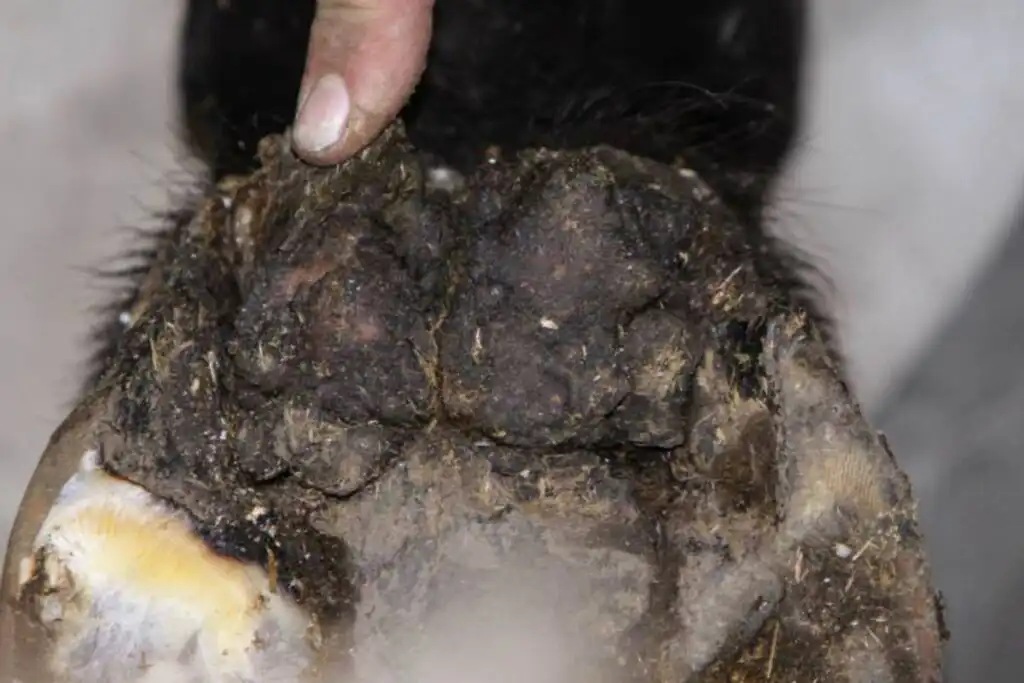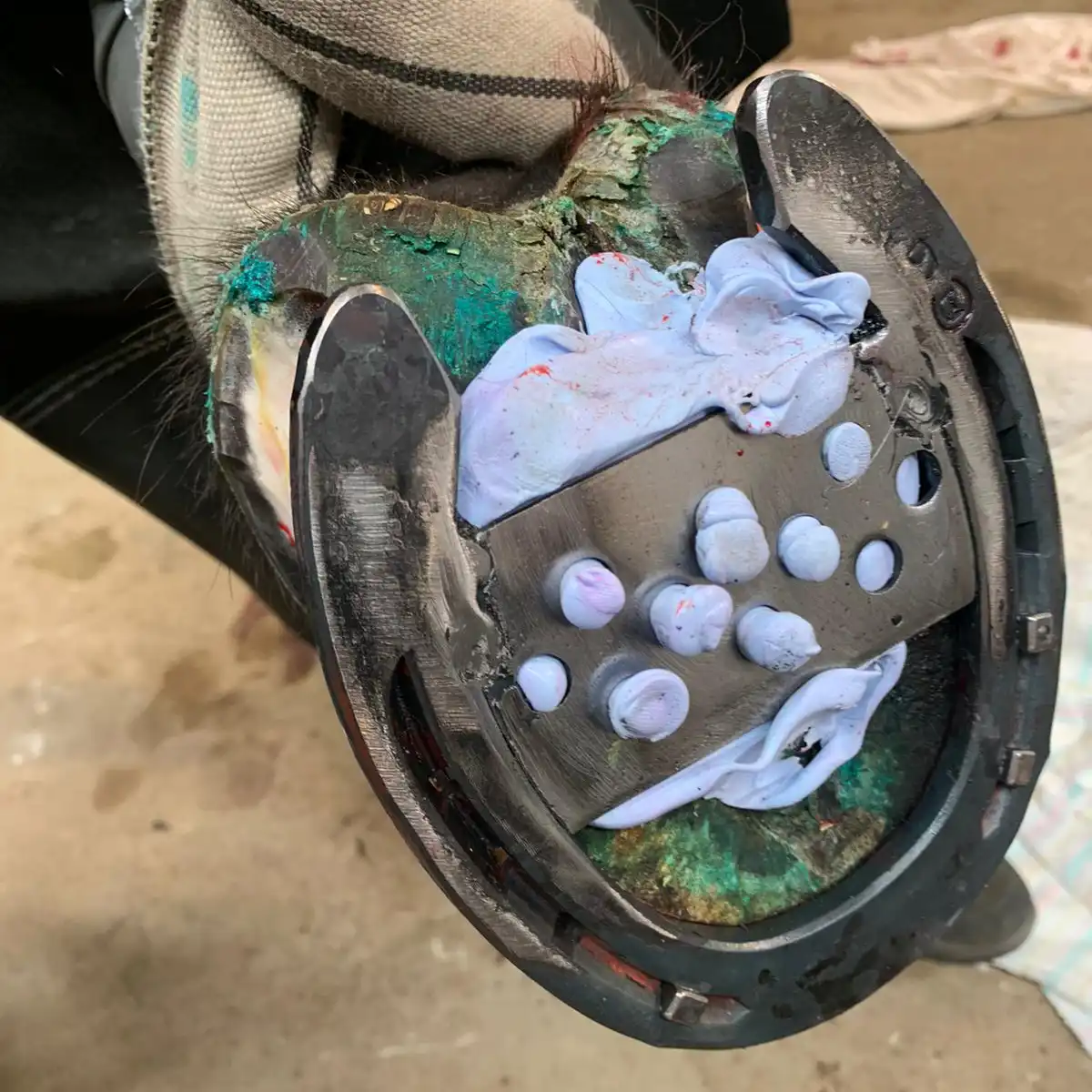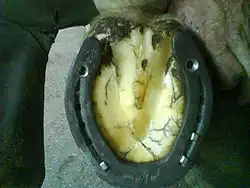Hoof Canker in Horses
Pododermatitis Chronica Verrucosa
Hoof canker is a rare but serious condition affecting the horse’s hoof. It is a chronic inflammatory disease of the pododerm, particularly the corium of the frog, characterized by abnormal proliferation of horn tissue that becomes infected and invades surrounding structures. The condition often begins in the central sulcus of the frog and can spread to the heel bulbs, sole, and hoof wall.
Hoof canker: a severe proliferative disease
Despite its name, hoof canker is not a malignant cancer. The term refers to the invasive, wart-like appearance and persistent nature of the disease. The affected tissue is typically soft, friable, granular or cauliflower-like, with a foul, cheese-like odor.
Veterinary literature may also refer to this condition as pododermatitis chronica verrucosa, which highlights the chronic and verrucous (wart-like) inflammatory characteristics of the disease.
How to differentiate hoof canker from thrush
Hoof canker is often misdiagnosed as thrush in the early stages. However, key differences include:
- Thrush involves the breakdown and degeneration of frog tissue, typically accompanied by a strong odor.
- Hoof canker results in proliferation of abnormal tissue, which invades the surrounding areas.
What are the clinicals signs of hoof canker?
Here are some abnormal signs that can help you recognize and get a hoof canker diagnosis:
- Soft, overgrown, or friable frog tissue
- Rapid regrowth of abnormal tissue after trimming
- Cauliflower-like proliferations in the frog or heel area
- Foul-smelling, cheesy discharge
- Bleeding easily upon debridement
- Lameness and pain on pressure
- Recurrent swelling of the affected limb
- Sometimes associated with coronitis (inflammation of the coronary band), leading to thickening of the coronet, ergots, or bulbs
What are the causes and risk factors of hoof canker?
The exact cause is still uncertain, but contributing factors may include:
- Progression from untreated or chronic thrush
- Possible autoimmune reaction within the hoof tissue
- Genetic predisposition, particularly in heavy feathered breeds such as Gypsy Vanners, Shires, Friesians, Belgian Drafts, and Fjord horses
Treatment of Hoof Canker
Treatment is complex and often requires surgical intervention, combined with meticulous hoof care and hygiene.
- Surgical Removal: Thorough excision of all affected tissue, typically under sedation or anesthesia
- Topical Therapy: Use of disinfectants and caustic agents such as copper sulfate or zinc sulfate, topical antibiotics or specialized wound dressings and bandages
- Daily Hoof Care: Frequent cleaning, drying, and re-bandaging
- Environmental Control: Maintaining a clean, dry environment is critical
- Medical Support: Use of anti-inflammatory medications (e.g., Prednisolone) has shown positive results, particularly when coronary band inflammation is present
Note: Farriers are not permitted to cut into live tissue without veterinary oversight due to the risk of excessive bleeding and pain.
Prognosis and Recurrence
Short-term prognosis is often favorable with early and consistent treatment. However, recurrence occurs in 30–45% of cases, especially when the coronary band is involved. In severe, non-responsive cases, euthanasia may be considered due to persistent pain and loss of function
How to prevent hoof canker
Preventive measures play a key role in reducing the risk of hoof canker:
- Daily hoof inspection and cleaning
- Regular trimming by an experienced farrier
- Immediate treatment of any frog infections
- Keeping the environment dry, clean, and well-managed
- Supporting the immune system with balanced nutrition and health care




